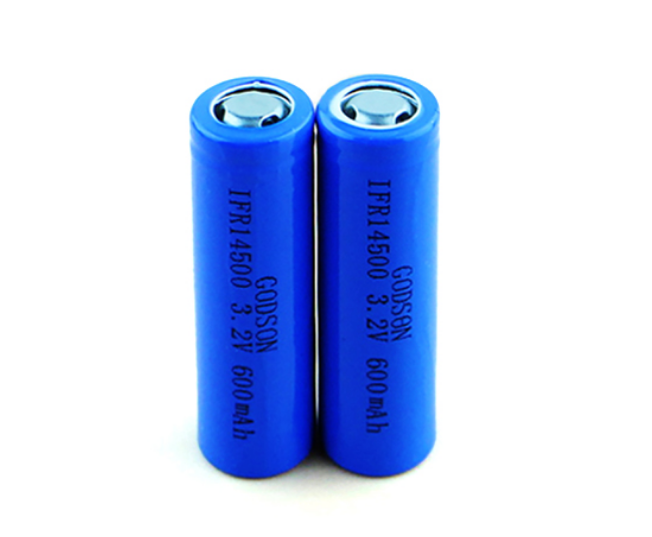LiFePO4 (Lithium Iron Phosphate) battery have gained significant attention in recent years due to their unique charging and discharging characteristics. These characteristics make them suitable for a wide range of applications, including electric vehicles, renewable energy storage, and portable electronics. In this article, we will explore the charging and discharging characteristics of LiFePO4 battery in detail.

LiFePO4 battery have a nominal voltage of 3.2 volts per cell. During the charging process, the voltage gradually increases until it reaches its maximum charge voltage, which is typically around 3.6 to 3.8 volts per cell. It's important to note that exceeding the maximum voltage can lead to cell damage or even safety hazards.
In the initial stage of charging, LiFePO4 batteries are charged with a constant current. This phase allows the battery to charge at its maximum current rate, which is typically set by the charging system. During this phase, the battery voltage remains relatively low and increases gradually.
Once the battery voltage reaches the maximum charge voltage, the charging system switches to a constant voltage mode. In this phase, the charging current gradually decreases while the battery voltage remains constant. This allows the battery to reach its full charge capacity.
LiFePO4 battery products have a relatively flat voltage plateau during the CV phase, which makes it challenging to determine when the battery is fully charged based solely on voltage. Therefore, charge termination methods such as timer-based charging or monitoring the charging current are commonly used to avoid overcharging.
The nominal voltage of a LiFePO4 battery is 3.2 volts per cell. During discharge, the voltage drops gradually as the battery discharges its stored energy. Unlike other lithium-ion chemistries, LiFePO4 batteries have a relatively flat discharge voltage curve. This means that the battery maintains a stable voltage throughout most of its discharge cycle.
LiFePO4 batteries have a high specific capacity, typically ranging from 130 to 160 milliampere-hours per gram (mAh/g). This high capacity allows them to store a significant amount of energy compared to other rechargeable battery chemistries.
LiFePO4 batteries can deliver high discharge currents without significant voltage drops. They have excellent power capabilities, making them suitable for applications that require high power output, such as electric vehicles or power tools.
LiFePO4 batteries exhibit excellent cycle life, which refers to the number of charge-discharge cycles the battery can endure before its capacity significantly degrades. These batteries can typically withstand thousands of cycles, retaining a high percentage of their initial capacity over time.
LiFePO4 batteries are less sensitive to temperature variations compared to other lithium-ion chemistries. They can operate over a wide temperature range, typically from -20°C to 60°C (-4°F to 140°F). However, extreme temperatures, both hot and cold, can affect their performance and overall lifespan.
LiFePO4 batteries are known for their safety and stability. Unlike other lithium-ion chemistries, LiFePO4 is more resistant to thermal runaway and less prone to thermal events such as overheating or explosion. This makes them a popular choice for applications where safety is a top priority.
LiFePO4 battery offer unique charging and discharging characteristics that make them a preferred choice for various applications. Their ability to deliver high discharge currents, maintain a stable voltage throughout most of the discharge cycle, and provide excellent cycle life make them ideal for applications requiring high power output and long-term reliability. Additionally, their safety and thermal stability further enhance their appeal. As the demand for efficient and reliable energy storage solutions continues to grow, LiFePO4 batteries are expected to play a significant role in shaping the future of energy storage technology.

 Ni-MH Battery C4700mAh 3.6V
Ni-MH Battery C4700mAh 3.6V Nickel Cadmium Nicd Battery Pack SC1800mAh 3.6V
Nickel Cadmium Nicd Battery Pack SC1800mAh 3.6V Ni-Cd Battery Pack D4000mAh 3.6V
Ni-Cd Battery Pack D4000mAh 3.6V Ni-Cd Battery Pack C2500mAh 3.6V
Ni-Cd Battery Pack C2500mAh 3.6V NICAD Battery Pack AA900mAh 3.6V
NICAD Battery Pack AA900mAh 3.6V LiFePO4 IFR18650 1600mAh 3.2V
LiFePO4 IFR18650 1600mAh 3.2V LiFePO4 IFR18650 1600mAh 6.4V
LiFePO4 IFR18650 1600mAh 6.4V Ni-MH Battery C4000mAh 3.6V
Ni-MH Battery C4000mAh 3.6V E-bike Battery 48V 10Ah JL-1
E-bike Battery 48V 10Ah JL-1 E-bike battery 48V 10Ah Qing Tian
E-bike battery 48V 10Ah Qing Tian